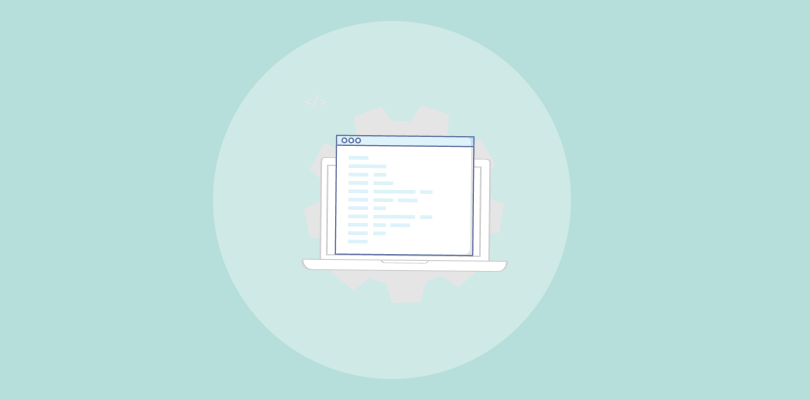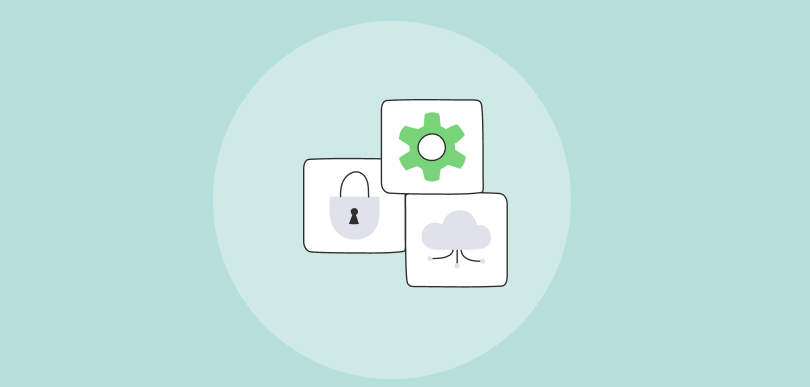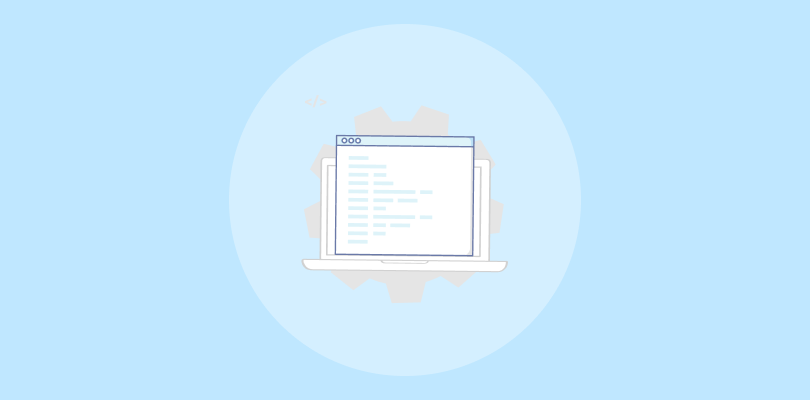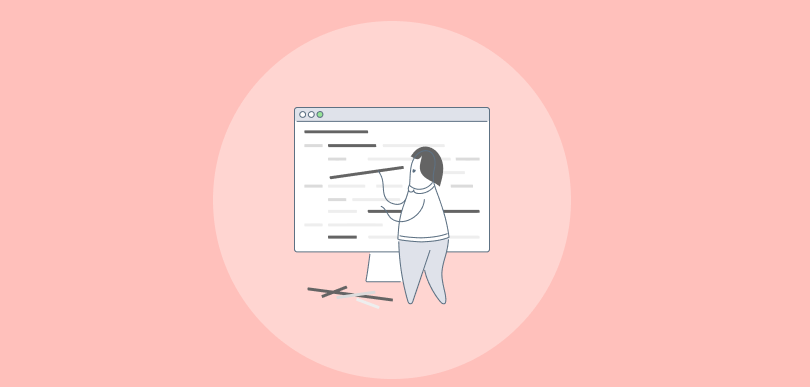Do you know CRM is the largest and fastest-growing software market, with an expected global revenue of $114.4 billion by 2027?
But with so many options on the market, how do you choose the right one for your business?
Let’s be honest: time is your most valuable asset as a business owner. Do you feel tired of wasting precious hours digging through spreadsheets and emails just to find basic customer information? Do you wish you had a personal assistant to organize all your leads, automate your follow-ups, and keep your whole team on the same page?
That’s where a CRM comes in. As you navigate these challenges, you might wonder whether to invest in a free or paid CRM solution.
In this guide, I’ll explain everything about free vs. paid CRM, helping you choose the right solution to strengthen your customer relationships and focus on what really matters: growing your business! Whether you’re a startup looking to keep costs low or an established business aiming to scale, we’ve got you covered.
Let’s get started and find the right CRM solution for you!
What Is CRM Software?
CRM software, or Customer Relationship Management software, is a tool designed to help businesses manage interactions with their customers. Imagine having all your customer details – names, contact info, past interactions, everything – neatly organized in one place. No more going through spreadsheets or sticky notes!
It’s like having a digital assistant that helps you keep track of your customers. But it’s not just about contacts. CRM software can also help you with things like sales tracking, marketing automation, and customer support. You can see which leads are hot, automate your email campaigns, and resolve customer issues faster.
Now, you might be wondering: should you go for a free CRM or a paid one?
Free vs. Paid CRM options both have their perks. Free CRM software is great if you’re just starting out, offering basic features like contact management and task reminders. But as your business grows, a paid CRM might be more beneficial, giving you advanced tools like analytics, automation, and custom workflows to really ramp up productivity.
Ultimately, CRM software is all about making your life easier and helping you grow your business. Whether you choose free or paid depends on your needs and budget!
Free vs. Paid CRM Solutions: Which Is Better for Your Organization?
Choosing the right CRM can feel like a bit of a puzzle, especially with the options of free and paid versions. Here’s a breakdown to help you decide what’s best for your organization:
1. Cost Considerations: Balancing Budget and Needs
Cost is often the first factor when deciding between free and paid CRM options. Free CRMs are tempting, right? And they can be great for small businesses or startups just starting in the CRM world. You get basic features without spending a lot, which is perfect for managing contacts and keeping things organized when you’re starting out.
However, free CRMs often come with limitations, like restricted storage, limited user access, or fewer integrations. Paid CRM solutions, on the other hand, require a monthly or yearly fee, but they offer effective features that can scale with your growth. For larger organizations needing advanced tools, customization, and dedicated support, a paid CRM can be worth the investment. Balancing cost with your organization’s needs helps you find the best fit.
2. Features and Functionality: What Do You Need?
A free CRM typically includes essential features like contact management, task tracking, and basic reporting. It’s sufficient for smaller teams focused on keeping track of customer interactions. Paid CRM solutions, however, offer a wide array of advanced features, such as automation, deeper analytics, and extensive integration options.
This allows your team to streamline processes, personalize customer interactions, and boost productivity. So when comparing Free CRM vs paid CRM benefits, consider whether your organization will thrive with basic features or if it needs comprehensive tools for growth and optimization.
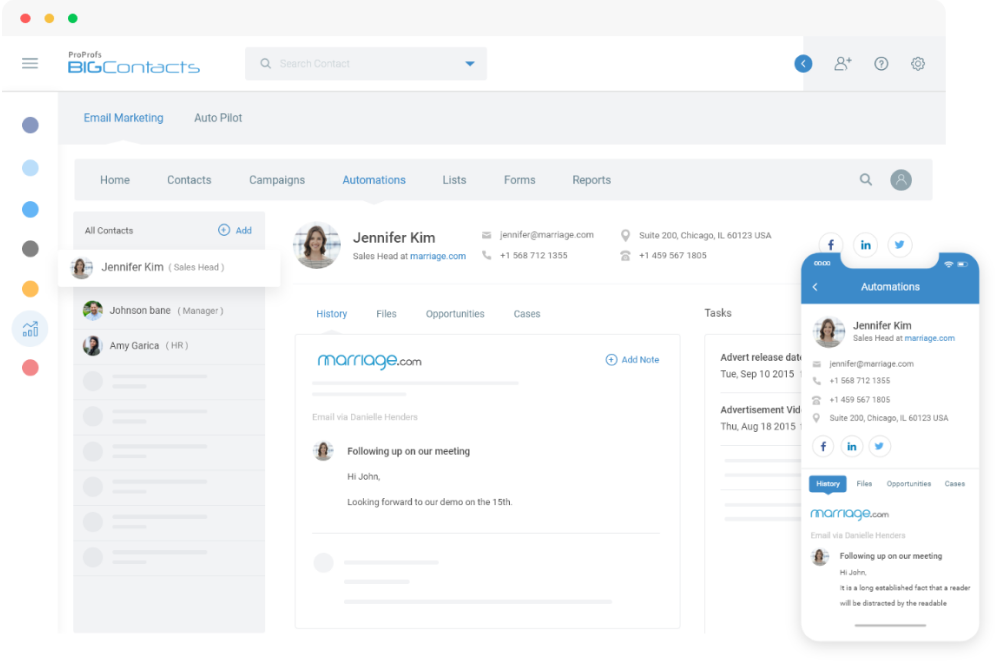
3. Total Users: How Many People Need to Use This Tool?
Free CRMs often limit the number of users you can have. This can be a major limitation for growing teams, as it can lead to bottlenecks and inefficiencies. For example, if your sales team is growing rapidly, a free CRM with a limited number of user licenses might force them to share accounts, which can lead to confusion and errors.
Paid CRMs, on the other hand, offer more flexibility with user numbers. This means you can easily add or remove users as your team grows or shrinks, ensuring everyone has the tools they need to do their jobs effectively. Additionally, paid CRMs often come with advanced features like role-based permissions, which allow you to control who can access and edit different parts of the system.
4. Customization Options: Tailoring the CRM to Fit Your Workflow
Free CRMs generally come with limited customization options, meaning you might need to adapt your processes to the CRM’s structure. This is manageable for simple workflows but can be challenging for complex processes. Paid CRM solutions shine here, helping you to tailor the platform to match your organization’s specific needs.
From custom fields and personalized reports to unique automation workflows, paid CRMs offer the flexibility to make the software feel like a true extension of your team’s workflow. The ability to customize can save time, reduce errors, and improve team adoption in the long run.

5. Customer Support: Assistance When You Need It Most
With free CRMs, support is often limited to community forums, knowledge bases, or limited email support. While this might be enough if you’re tech-savvy, it can be a problem when dealing with complex issues. Paid CRMs, however, come with dedicated customer support that can be truly helpful when issues arise.
Many paid plans include 24/7 support via phone, chat, or email, along with training sessions and dedicated account managers. Having reliable, accessible support can help minimize downtime, improve user satisfaction, and ensure your team makes the most of the CRM’s features.
Check out this quick video to learn more about how CRM software with helpdesk support can helping in boosting sales:
6. Security and Data Privacy: Protecting Your Customer Information
Security is critical, especially when handling sensitive customer data. Free CRMs often come with basic security measures, which may be sufficient for smaller operations but can leave vulnerabilities as your data volume grows. Paid CRM solutions generally offer more advanced security features like data encryption, compliance certifications (e.g., GDPR), and access controls.
These features can provide peace of mind that your customer information is well-protected and in line with industry standards. When customer trust is on the line, the security and privacy benefits of a paid CRM are hard to overlook.

7. ROI and Long-Term Value: Assessing the True Benefits
Finally, when weighing Free CRM vs paid CRM benefits, consider the long-term ROI. Free CRMs may seem cost-effective, but limitations could lead to missed opportunities for streamlining processes, deepening customer relationships, or accessing valuable insights.
Paid CRMs, with their advanced tools and support, offer a clear return on investment as they enable more effective operations and stronger customer connections. For organizations looking to grow and compete, the long-term value of a paid CRM can far outweigh its upfront cost.
Free CRM Software: The Pros and Cons
Okay, so you’re interested in CRM software but not quite ready to spend a lot of money on it right away? Totally understandable! Free CRM software can be a great way to test the waters and see if it’s the right fit for your business. But like anything free, it comes with its own set of pros and cons. Let’s break it down:
The Pros of Free CRM Software
1. Zero Cost, High Value
The most obvious benefit? It’s free! Free CRM software allows you to start managing your customer relationships without any upfront cost. You get to explore the platform, learn its features, and start organizing your business without impacting your budget.
2. Easy to Use
Most free CRM tools are designed to be simple and user-friendly, with fewer features to master. This makes them great for beginners or small teams who need a simple way to keep track of customers and sales.
3. Essential Features Are Often Included
Even at no cost, many free CRM tools still offer the basics—like contact management, sales tracking, and task reminders. This might be all you need if you’re just starting out or if your business has a smaller customer base.
4. Low-Risk Testing
Free CRM software is an excellent way to test out CRM systems if you’re new to the concept. It lets you learn what you need in a CRM tool without committing to a paid subscription.
The Cons of Free CRM Software
1. Limited Features
One major downside is the feature limitations. Free CRM versions usually offer only the essentials, meaning you might miss out on advanced features like marketing and sales automation, analytics, and detailed reporting. As your business grows, these missing features can limit your efficiency and insights.
2. User Limits
Many free CRM tools limit the number of users or contacts you can manage. This can be fine for a small team, but as you grow, you may quickly outgrow these limits, pushing you to consider a paid plan.
3. Lack of Customization
Free CRMs often come with minimal customization options, meaning you may not be able to tailor it exactly to your business needs. Paid CRMs, on the other hand, often allow for detailed customization to better fit your workflows.
4. Minimal or No Customer Support
With a free CRM, customer support is often limited or nonexistent. Paid plans typically come with dedicated support teams to help you with troubleshooting, setup, or questions. If your free CRM isn’t working the way you need, you could be stuck without help.
5. Possible Data Restrictions
Free CRMs may come with limited data storage, which could slow down your operations or restrict your ability to store extensive customer information. For growing businesses, these limits can become problematic.
Paid CRM Software: The Pros and Cons
It’s tempting to go with a free CRM, but is it always the best choice for your business needs? Let’s break down the pros and cons of paid CRM software so you can decide if it’s worth the investment.
The Pros of Paid CRM Software
1. Advanced Features and Flexibility
One of the biggest perks of paid CRM software is the array of advanced features that come with it. Unlike free versions, which are usually basic, a paid CRM lets you customize features to fit your needs. You can automate tasks, set up personalized workflows, and gain deeper insights into customer behavior – tools that make managing customer relationships much easier.
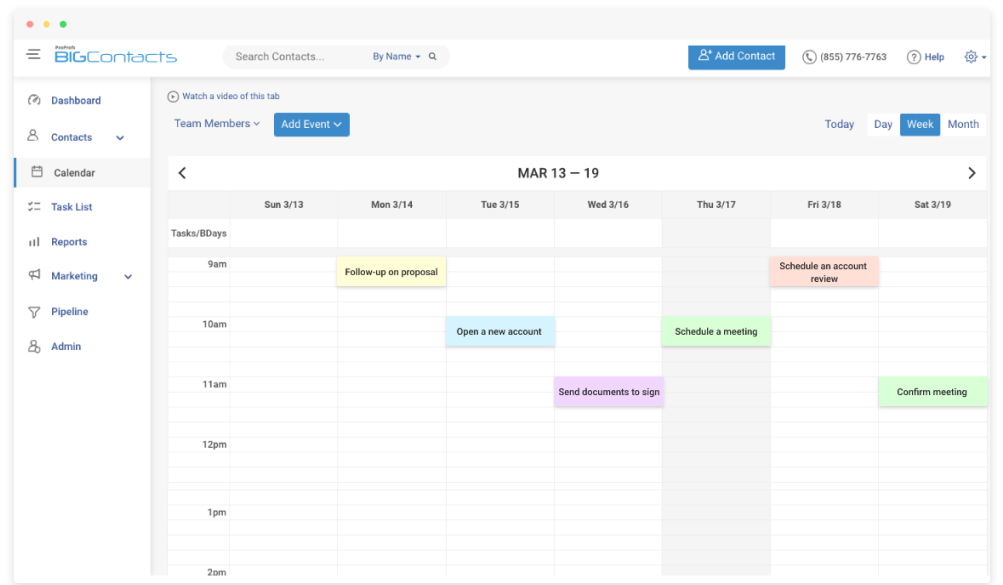
2. Higher Data Storage and User Limits
Paid CRMs often offer generous storage options and higher user limits. If you’re managing a growing customer base, these factors are quite helpful. With a free CRM, you might run out of storage or hit user limits, which can hold back your team’s productivity.
3. Better Security and Support
For businesses handling sensitive data, security is a top priority. Paid CRM software generally includes stronger security features, like data encryption and frequent backups, which free options often lack. Plus, with a paid CRM, you’ll have access to priority customer support whenever you need it. This can save a lot of time and hassle when issues arise.
4. Scalability
As your business grows, so will your CRM needs. Paid CRM systems are usually designed to scale alongside you, allowing you to add new features, users, and storage without missing a beat. You’re essentially investing in software that can grow with you, so you won’t have to switch platforms down the line.
The Cons of Paid CRM Software
1. Cost
The obvious downside is cost. Unlike free options, paid CRM software can require a significant financial commitment. Costs can vary from a few dollars per month to thousands annually, depending on the platform and features you need. For startups or small businesses, this might feel like a hefty price tag.
2. Unused Features
Not every business needs every feature a CRM offers. When you’re paying for a CRM, there’s a chance you’ll end up with tools and functions that you rarely, if ever, use. This can make it feel like you’re paying for more than you actually need.
3. Steeper Learning Curve
With more features often comes a more complex interface. Paid CRM systems can sometimes be overwhelming, especially if you’re new to CRM software. Your team may need additional training to get up to speed, which adds to the time and cost investment.
4. Ongoing Maintenance
Paid CRM software typically requires regular updates and maintenance to stay current and efficient. If you’re using a self-hosted CRM, you might need dedicated resources to handle these tasks, which can add more overhead.
What Is the Difference Between Free CRM & Paid CRM
When choosing a CRM, one of the biggest decisions is whether to go with a free or paid option. To help you decide which is right for you, here’s a breakdown of the main differences between free and paid CRM options.
| Feature | Free CRM | Paid CRM |
|---|---|---|
| Cost | Completely free, making it easy on your budget. | Monthly or annual fees, depending on the plan. |
| User Limit | Limited number of users – usually enough for small teams. | Allows unlimited users, ideal for growing businesses. |
| Storage Space | Basic storage – good for light usage. | Expanded storage, fitting for high data volume needs. |
| Features | Basic features like contact management, task tracking. | Advanced tools like automation, analytics, and integrations. |
| Customization Options | Minimal customization – limited to essential tweaks. | Highly customizable to fit specific business workflows. |
| Customer Support | Community support or basic email support. | Priority support options, often 24/7, for quick assistance. |
| Integrations | Limited integrations – often works with a few essential tools. | Wide range of integrations, including with complex systems. |
| Scalability | Great for small businesses or startups. | Ideal for scaling as your business grows and needs expand. |
| Security & Compliance | Basic security features. | Enhanced security, often meeting industry standards. |
| User Experience | Simple interface – easy for beginners but may lack depth. | Enhanced user experience with tailored features and tools. |
Picking the Right CRM Software for Your Small Business
Choosing between free and paid CRM solutions depends on what your business truly needs at its current stage. Free CRMs are excellent for beginners and small teams who want to organize contacts, keep track of tasks, and get a feel for how a CRM can help their business. They provide a cost-effective way to improve customer relationships without a financial commitment.
However, if your business is growing or if you’re looking for advanced features like automation, custom reporting, and integration with other tools, a paid CRM could offer a big boost in efficiency and productivity.
Ultimately, it’s all about finding the right balance between budget and features. For those wanting a versatile solution, BIGContacts is worth considering. It offers both essential tools and scalability options, so you can grow with it as your business evolves. Plus, it has a forever-free plan, making it easy to start without the pressure of upfront costs. Whether you need a free or paid CRM, BIGContacts strikes a great balance, delivering value at every level of business growth.
FAQ
Are free CRMs good for bigger companies, too?
Free CRMs can work for bigger companies, but they often fall short of the advanced features, customization, and scalability needed for large teams. If your company has complex processes or high data volumes, a paid CRM might be a better fit, offering the depth and support to handle your business's growing demands more efficiently.
How often do companies update their paid CRM systems?
Companies typically update their paid CRM systems every few months, with some even rolling out updates monthly. These updates keep your CRM running smoothly, add new features, and improve security. Regular updates are part of what you pay for, so you can trust your CRM will stay efficient and keep up with your business’s evolving needs.
Can I change the paid CRM system to fit how my business works?
Absolutely! One of the main advantages of paid CRM systems is their flexibility. You can customize features, workflows, and dashboards to align with how your business operates. Whether you need specific fields for customer data or unique reporting tools, most paid CRMs allow you to make these adjustments to ensure they fit your needs perfectly.
What if I want to switch from my current paid CRM system to a different one?
If you want to switch from your current paid CRM system to a different one, start by assessing your needs and what features are missing in your current system. Once you find a suitable alternative, export your data from the old CRM, import it into the new one, and take the time to train your team on the new platform.
FREE. All Features. FOREVER!
Try our Forever FREE account with all premium features!



